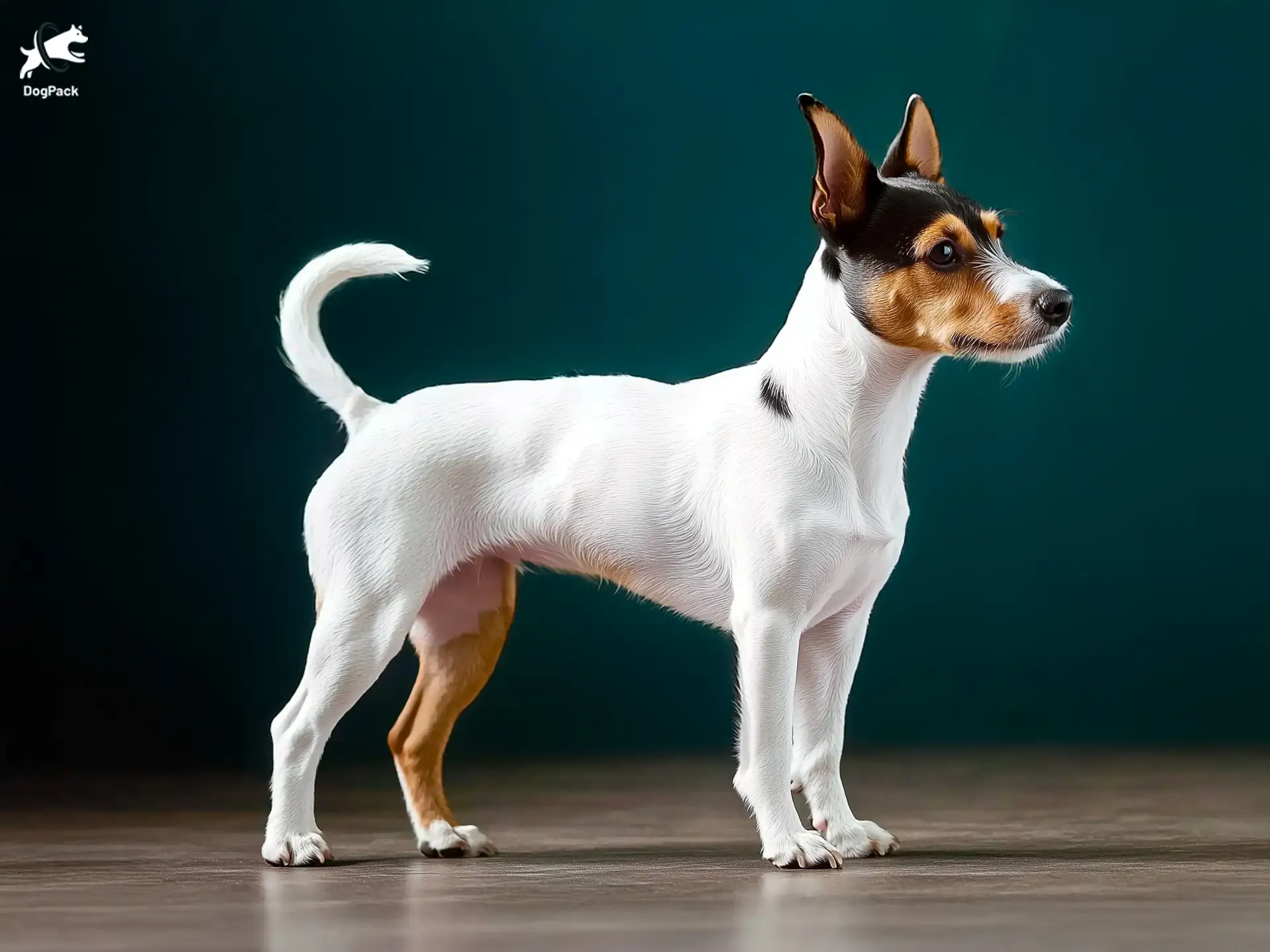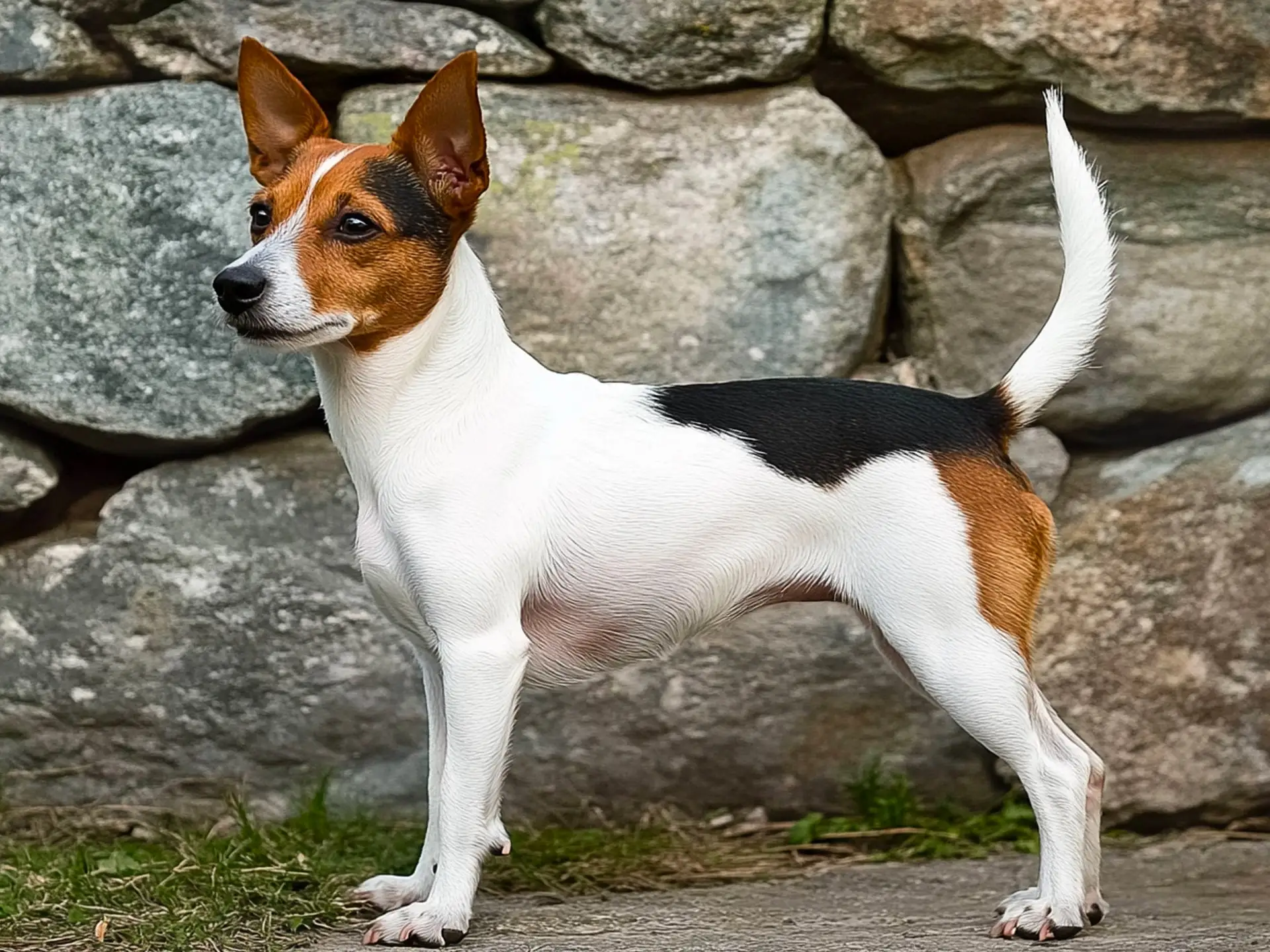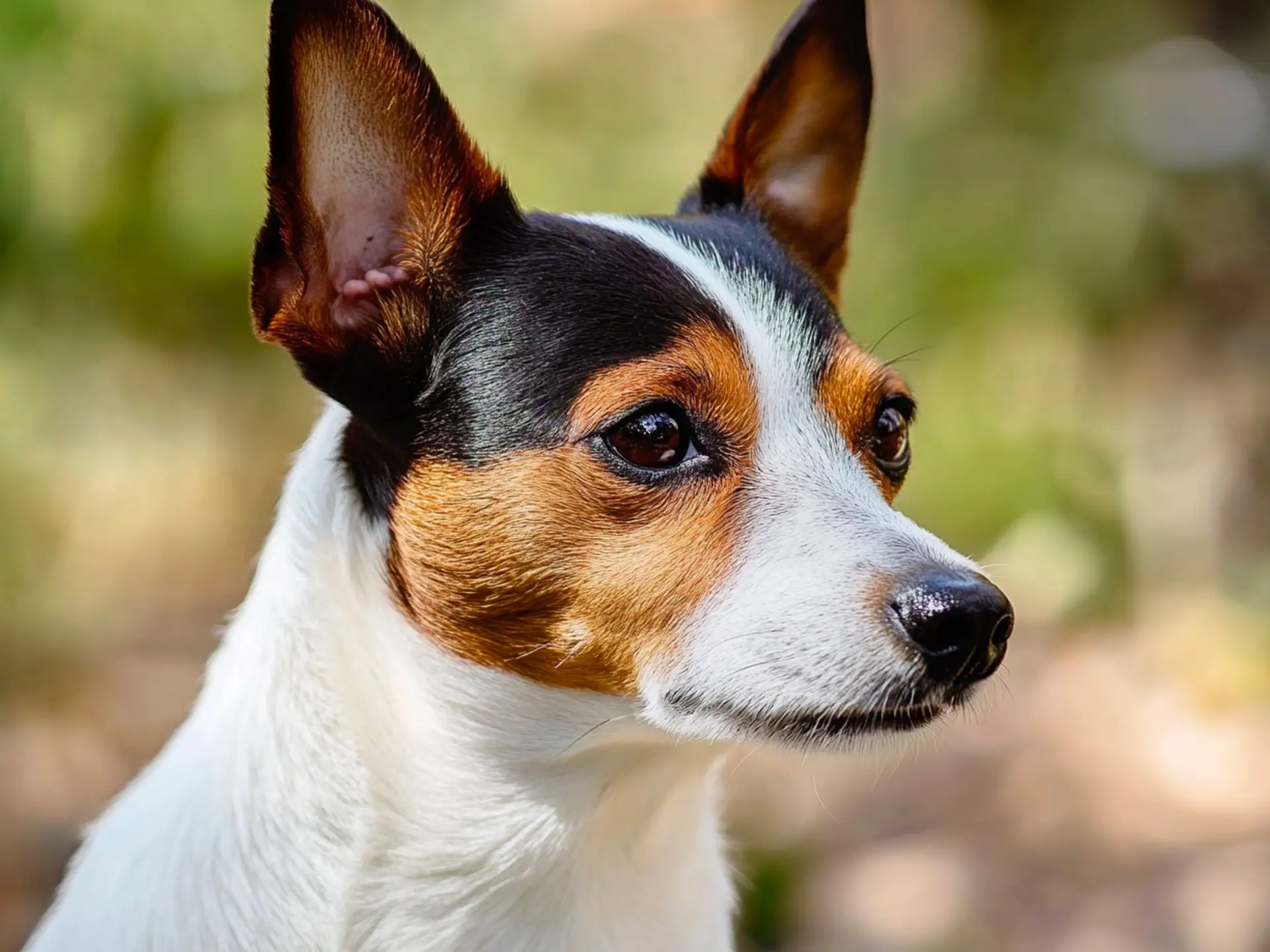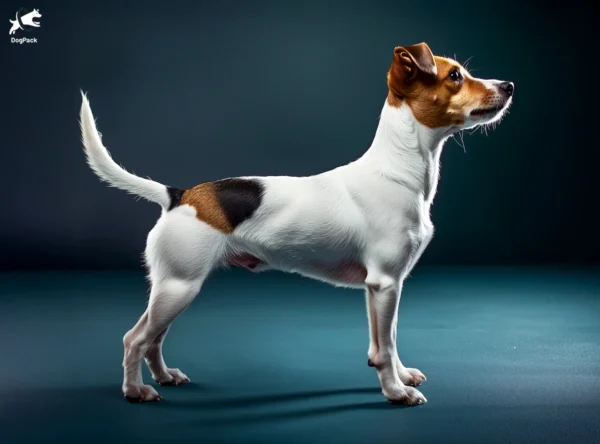Tenterfield Terrier Dog Breed Info & Overview
The Tenterfield Terrier is a spirited, small-sized dog originally from Australia. Renowned for its quick reflexes and curious nature, this pup excels at keeping households lively. Owners appreciate the breed’s loyal disposition, adaptability in diverse environments, and endearing determination. Whether as a playful family member or a vigilant watchdog, this compact terrier packs plenty of charm into a petite frame.
Characteristics
Pictures
Breed History
Tracing its roots to colonial Australia, the Tenterfield Terrier was prized for its prowess in controlling vermin on farms and rural homesteads. Legend has it that these determined canines traveled alongside pioneers, dispatching rats and mice from wagons and supply stores. Their keen hunting instincts and agility quickly earned them a favorable reputation among settlers.
The breed’s name stems from the town of Tenterfield in New South Wales. Early enthusiasts worked diligently to establish consistent traits, favoring a compact size, nimble movement, and a bold yet friendly attitude. Over time, these feisty little terriers carved out a niche in Australian homes, delighting owners with their unwavering spirit and tireless energy.
Despite being relatively unknown outside its homeland, the Tenterfield Terrier has gained admirers worldwide, thanks to its lively personality and rich heritage. Continued breeding programs ensure the lineage remains true to its original working roots. Today, this terrier’s reputation as both a dedicated farm helper and a devoted companion endures, making it a hidden Aussie gem among small dog breeds.
Temperament, Personality
Friendly yet fearless, this little charmer never backs down from a challenge. Tenterfields love being in the thick of family activities, watching over their favorite humans with curious eyes. With early socialization, they typically accept newcomers, although they might initially voice their opinions loudly. Their confidence shines through in everything they do, making them the life of any gathering.
When it comes to kids, these terriers are playful partners who match youthful energy quite well. They thrive on interactive games, like fetch or tug-of-war, and often enjoy learning new tricks to impress a crowd. However, supervision is wise, as their spirited natures can lead to overly enthusiastic antics around very young children or more timid pets.
In multi-pet households, especially with cats or larger dogs, this terrier’s spunky side may require a bit of managing. Proper introductions and consistent boundaries go a long way toward harmonious living. However, once comfortable, they become loyal pals who relish family bonding time, often curling up on the couch just as eagerly as they chase down squeaky toys.
Physical Characteristics
Small yet surprisingly sturdy, this terrier boasts a well-proportioned physique with a wedge-shaped head. Its triangular, perked ears lend an alert expression that hints at a readiness for action. A short, fine coat emphasizes the breed’s lean musculature, while their bright, dark eyes seem to sparkle with curiosity, ready to investigate any interesting sight or sound.
Typical coat colors include white paired with tan, black, or liver patches, creating a striking contrast that reflects their spirited demeanor. Some Tenterfield Terriers feature freckles or speckles on their chests or legs, adding extra individuality. Despite their dainty appearance, they carry themselves with confidence and can be surprisingly agile, dashing swiftly after a toy or a scurrying critter.
Their compact size makes them a good fit for smaller living spaces like apartments, provided they have outlets for their energy. Lightweight but nimble, they’re easy to scoop up for a snuggle, yet always prepared to leap back into action. The Tenterfield Terrier’s balanced proportions and signature terrier stance convey an air of refined alertness beloved by dog enthusiasts.
Health Issues
Like many purebred canines, Tenterfield Terriers can be prone to certain hereditary concerns, though overall, they’re considered robust. Patellar luxation—when the kneecap shifts out of place—is a notable issue. Regular check-ups and monitoring any signs of limping or discomfort can help detect this condition early. Maintaining a healthy weight also eases stress on their joints.
Dental health is another priority, given the breed’s smaller jaws and potentially crowded teeth. Routine cleanings, either at home or through a veterinarian, can prevent plaque buildup and gum disease. Owners are encouraged to introduce tooth brushing at a young age, using canine-safe toothpaste and gentle methods for a comfortable experience.
Some Tenterfield Terriers may also experience skin sensitivities or allergies, often presenting as itching or redness. Regular grooming sessions can help catch skin irritations in their early stages. If persistent issues arise, consulting a qualified vet is crucial. For more in-depth information, resources such as VCA Hospitals and The University of Melbourne Veterinary Hospital offer guidance on genetic testing and specialized treatments.
Grooming Needs
With a sleek, short-haired coat, this terrier’s grooming routine is relatively straightforward. A quick weekly brush removes loose hairs, while a gentle wipe-down with a damp cloth keeps the coat shiny. Despite low to moderate shedding, regular sessions help minimize fur tumbleweeds around the home and give owners an opportunity to spot any skin issues early.
Nail trims every couple of weeks prevent overgrowth, which can be uncomfortable. Active Tenterfield Terriers may naturally wear down their nails on rough surfaces, but a trim is still recommended if you start hearing that telltale “click” on the floor. Checking their ears for excess wax or irritation is also important, especially since they’re so alert and active outdoors.
Bath time should be occasional—perhaps once a month or as needed—because too-frequent washing can strip the natural oils from their skin. Opt for a gentle, dog-specific shampoo to keep their coat conditioned. While sprucing up your pup, don’t forget to reward them with treats for good behavior. A calm approach makes grooming a positive, bonding experience for both parties.
Exercise Requirements
Though small, Tenterfield Terriers possess a surprisingly high energy drive. A couple of brisk walks or one energetic play session per day usually keeps them content. They adore games like fetch, Frisbee chasing, and even agility drills in a fenced yard. Without adequate outlets, their enthusiasm can morph into mischievous behavior, like digging or curious raids on household items.
If you live in an apartment, quick visits to a local park or short training sessions indoors can do wonders to burn off their pent-up zest. Interactive toys, puzzle feeders, and short bursts of high-activity play also keep these clever pups mentally engaged. Consistency is key, as they’re happiest when their days follow a reliable exercise routine.
For owners who enjoy hiking, these terriers handle moderate trails with surprising stamina—just be mindful of their short legs on rugged terrain. Keep them leashed in unfamiliar areas, since their keen prey drive might lead to a spirited chase. Encouraging your Tenterfield Terrier’s adventurous side strengthens your bond while ensuring they remain fit, focused, and thoroughly entertained.
Training Tips
Training a Tenterfield Terrier can be both rewarding and amusing. Their sharp minds pick up cues quickly, especially when positive reinforcement is part of the mix. Treats, upbeat verbal praise, and brief, focused sessions yield the best results. Consistent boundaries help them understand household rules, preventing the swift emergence of stubborn terrier tendencies.
Housebreaking typically goes smoothly if started early and maintained with a steady routine. Crate training can also be beneficial, offering your dog a cozy retreat and promoting a sense of security. However, avoid lengthy crate times, as these vivacious pups love being in the middle of family activities and might protest if isolated for too long.
Their strong prey drive means recall training is essential—especially outdoors where distractions abound. Begin in a calm environment, gradually introducing mild diversions before tackling high-temptation settings. Socializing them with various people, sounds, and experiences during puppyhood fosters a confident adult dog. Once they master the basics, Tenterfields often excel at advanced tricks, showcasing their playful intelligence.
Nutrition, Diet
Tenterfield Terriers generally do well on a balanced, high-quality diet formulated for small, active breeds. Aim for a protein-rich kibble or wet food containing real meat as the primary ingredient. Their energetic nature demands nutrient-dense meals that support sustained stamina throughout the day, as well as promote lean muscle maintenance.
Typically, an adult Tenterfield Terrier weighing around 10 pounds requires about 300–350 calories per day, split into two small meals. This helps maintain steady energy levels and keeps their digestion on track. Look for dog foods with moderate fat levels to support their lively metabolism but avoid excessive fillers, which can lead to weight gain.
Monitor portion sizes and adjust as needed based on exercise levels. If they’re prowling for food between meals, consider offering healthy dog-safe snacks like small pieces of boiled chicken or bite-sized carrots. Always ensure fresh water is available. For tailored advice—especially if your pup has specific health needs—consult a veterinarian experienced with small Australian terrier breeds.
Adoption, Breeders
When adopting a Tenterfield Terrier, search for local rescues, shelters, or breed-specific organizations. Although they can be less common than other terriers, you might be pleasantly surprised to find these energetic companions waiting for a forever home. Adopting often gives you insight into a dog’s personality and health, as rescue groups typically provide vet checks and social assessments.
If you prefer purchasing a puppy, prioritize reputable breeders recognized by official clubs, such as the National Tenterfield Terrier Council of Australia. Ethical breeders conduct health screenings on parent dogs, ensuring genetic conditions are minimized. Don’t hesitate to visit their facilities, ask questions about lineage, and request documentation on any relevant health clearances.
Sites like PetRescue in Australia also frequently feature Tenterfield Terriers or similar small breeds in need of a caring family. Steer clear of puppy mills that lack transparency or offer suspiciously low prices. A responsible breeder or legitimate adoption venue prioritizes the welfare of each dog, setting you and your future four-legged friend up for a happy, healthy life together.
Family Pet?
Though they thrive on attention, Tenterfield Terriers are quite adaptable and can slide into various family structures. They form especially strong bonds with older children who match their spirited energy, or active seniors eager for a lively sidekick. In busy homes, these dogs find plenty of opportunities to engage, whether it’s snuggling on the couch or exploring the backyard.
Of course, every dog’s tolerance and social habits differ, so early introductions are key. Show children how to handle the dog gently, and remind them that these little terriers may get startled by sudden moves. With a bit of guidance, they become patient playmates who love a good round of chase or a cozy afternoon watching TV together.
When other pets are involved, consistent socialization efforts help pave the way for a harmonious environment. Supervise initial meetings, ensuring no one feels overwhelmed. Typically, Tenterfield Terriers mesh nicely with easygoing animals that appreciate their playful vibe. Over time, it’s not uncommon to see them napping next to another dog or even forging a playful bond with a confident cat.
Right For You?
Before bringing home a Tenterfield Terrier, consider whether you can meet this pup’s lively needs. Frequent play sessions, mental stimulation, and a firm but gentle training approach are all part of the package. Apartment living is possible, but only if you commit to daily exercise. Their vocal nature also means they’ll keep an eye (and ear) out for anything unusual.
These fearless charmers do best with individuals who appreciate an involved, high-energy companion. They’re eager to join errands, weekend adventures, or cuddle up for quality lap time—so long as they aren’t left alone for hours on end. If you’re seeking a petite, entertaining dog with a dash of Australian spunk, this breed’s enduring loyalty and zest for life may steal your heart.
However, those wanting a low-key dog that lounges all day might find the Tenterfield’s boundless energy overwhelming. Their sharp minds demand engagement, and they often excel in puzzle games or trick training. If you can keep up with their playful pace—and chuckle at their occasional stubborn streak—they’ll repay you with endless devotion and comedic moments that brighten your home.
Conclusion
Overall, the Tenterfield Terrier suits anyone craving a spirited small dog that’s brimming with personality. With proper exercise, mindful training, and plenty of affection, these upbeat companions can flourish in various living situations. If you’re charmed by a quick-witted Aussie pup that’s equally ready for snuggles or a spirited chase, then you just might have found your ideal canine partner.
FAQs
-
How is the Tenterfield Terrier different from a Jack Russell Terrier?
The Tenterfield Terrier is more refined and compact than the Jack Russell, with a smoother coat, longer legs, and a calmer demeanor. While both breeds are energetic, the Tenterfield is less intense and more adaptable for apartment living or less active owners.
-
Where did the Tenterfield Terrier originate, and why is it named after Tenterfield?
This breed originated in Australia and was named after the town of Tenterfield, New South Wales, where it became popular. Bred from small British working terriers, the breed was refined in Australia for ratting, hunting, and companionship.
-
Do Tenterfield Terriers have natural bobtails?
Yes, some Tenterfield Terriers are born with natural bobtails, while others have full tails. This is a unique trait of the breed, and it is completely natural, unlike breeds that historically had docked tails.
-
Are Tenterfield Terriers prone to separation anxiety?
Yes, Tenterfield Terriers form strong bonds with their owners and may develop separation anxiety if left alone for long periods. Mental stimulation, toys, and gradual training can help them become more independent.
-
What are the most common coat colors in Tenterfield Terriers?
Tenterfield Terriers are typically white with black, tan, or liver markings. Their short, smooth coat is low-maintenance and easy to groom, making them ideal for owners looking for a wash-and-go dog.
Breed Ratings
The Tenterfield Terrier is quick to pick up commands, thriving on mental stimulation and new challenges.
Expect boundless enthusiasm for games and activities; they’re always ready to chase a ball or squeaky toy.
Don’t let the small frame fool you; these dogs crave action and daily adventures to stay satisfied.
Their short coat sheds moderately, but regular brushing helps control stray hairs around the home.
Bred to root out rodents, they’ll pursue anything that scampers, requiring mindful off-leash supervision.
With a low-maintenance coat, quick brushes and occasional baths keep them looking fresh and tidy.
Intelligent and eager, they respond well to positive reinforcement, though occasional stubborn streaks may emerge.
They enjoy human company and can grow anxious if isolated for extended periods.
Naturally alert watchdogs, they voice concerns readily but can learn moderation with consistent training.
Minimal drooling means little mess, a bonus for neat freaks or apartment dwellers.
Generally sociable if introduced early, but their bold nature requires respectful boundaries with larger dogs.
Overall robust, but watch for knee issues (patellar luxation) and maintain good dental care habits.















